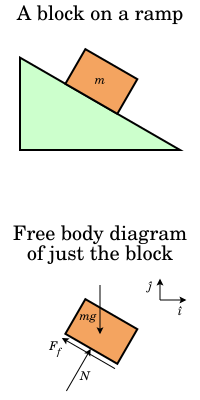Guillaume Amontons facts for kids
Quick facts for kids
Guillaume Amontons
|
|
|---|---|

Guillaume Amontons, Luxembourg Garden, 1690
|
|
| Born | 31 August 1663 Paris, France
|
| Died | October 11, 1705 (aged 42) Paris, France
|
| Nationality | French |
| Known for | Amontons' laws Hot air engine Thermodynamic temperature |
| Scientific career | |
| Fields | Physics |
Guillaume Amontons (born August 31, 1663 – died October 11, 1705) was a French inventor and scientist. He made important discoveries about how things rub against each other, which is called friction. Friction is the force that slows down moving objects when they touch. Amontons also studied how heat and energy work, a field called thermodynamics. He even thought about the idea of absolute zero, which is the coldest possible temperature. He also designed some of the first engines.
Contents
Life of Guillaume Amontons
Guillaume Amontons was born in Paris, France. His father was a lawyer who came from a region called Normandy. When Guillaume was young, he lost most of his hearing. He became mostly deaf.
Even though he never went to a university, Guillaume was very smart. He taught himself a lot about mathematics and physical sciences. He also studied how machines work. He spent time learning skills like drawing, surveying land, and architecture. Guillaume Amontons lived and died in Paris, France.
Amontons' Scientific Work
The French government supported Guillaume Amontons' research. He worked on different public projects.
Improving Scientific Tools
Amontons made better versions of many scientific tools. In 1695, he improved the barometer, which measures air pressure. He also made a better hygrometer in 1687, which measures how much moisture is in the air. In 1695, he improved the thermometer, which measures temperature. These improvements were especially helpful for sailors to use at sea.
He also showed how an optical telegraph could work. This was a way to send messages over long distances using signals. Amontons also suggested using his water clock (called a clepsydra) to keep time on ships. This was important for sailors to know their exact location.
Understanding Heat and Engines
Amontons studied how pressure and temperature are connected in gases. Even though his thermometers were not perfect, he found something important. He discovered that the pressure of a gas increases a lot when it goes from cold to the boiling point of water.
His work helped other scientists later on. It led to the discovery of important gas laws. Amontons also thought that if you made a gas cold enough, its pressure would disappear. He was very close to figuring out absolute zero. This is the theoretical temperature where a gas would have no pressure. He estimated it to be around -240°C. However, other scientists fully discovered absolute zero much later.
Guillaume Amontons also invented the hot air engine. In 1699, he built his first engine. This was more than 100 years before the famous Stirling engine. Amontons called his engine a "fire mill." It used a new way of working with heat, which is now called the Stirling cycle.
The fire mill was a wheel that used the expansion of hot air to create power. Amontons' fire mill could produce a lot of power. It was as powerful as the best hot air engines made in the 1800s. A key difference in Amontons' engine was that it used water instead of a solid piston. It also created a spinning motion instead of a back-and-forth motion.
Discoveries about Friction
In 1699, Amontons shared his findings about the laws of friction. These laws had actually been discovered earlier by Leonardo da Vinci, but they were forgotten. Some people were doubtful about Amontons' laws at first. But later, in 1781, another scientist named Charles-Augustin de Coulomb proved them to be true. Because of his work, Amontons is known as one of the most important people in the study of friction.
Amontons' Laws of Friction
The Amontons-Coulomb laws of friction explain how dry friction works:
- The force of friction gets stronger as the weight pushing down on an object increases. (This is Amontons' 1st law).
- The force of friction does not depend on how big the area of contact is. (This is Amontons' 2nd law).
- The force of friction when something is sliding does not change with how fast it is sliding. (This is Coulomb's law).
The first two laws were found by Amontons. The third law was found later by Coulomb. Together, they are called the Amontons-Coulomb laws of friction. These laws are for dry friction only. If you add a lubricant (like oil), the way friction works changes a lot.
You can see these laws with a simple example. Imagine a brick resting on a slanted surface. The brick stays still because of static friction. If you make the surface steeper, the brick will eventually start to slide down. This happens when the force of gravity becomes stronger than the friction.
Sometimes, Amontons' laws might not seem to work perfectly. This can happen in very complex situations where the pressure isn't even. In these cases, parts of the object might start to slip before the whole object moves.
Honours
- Member, Académie des Sciences (1690)
- A crater on the Moon is named Amontons after him.
See also
 In Spanish: Guillaume Amontons para niños
In Spanish: Guillaume Amontons para niños


